Hi steemitans, H R Y???? GOOD MORNING FOR EVERYBODY, a walk among the tombs and the mausoleums of each place reveals small curiosities and great stories hidden in these graveyards...
As you know:
In recent times, there has been great interest among travelers around cemeteries and everything related to them. So much so that, in order to preserve and make them known there is an association that brings together the most significant and valuable cemeteries in Europe. The Significant Cementeries promotes tourism by 179 cemeteries from 22 European countries that stand out for their historical significance as well as for the value of the artistic heritage they hold. Another initiative is the European Route of Cemeteries qualified as cultural interest by the Council of Europe and which brings together a total of 63 fields located in 50 cities.
From Paris to Vienna, from Havana to Japan
A visit to Paris should include a walk through the wonderful Montmartre cemetery, populated by maples, lime trees and chestnut trees, where Stendhal or the Russian dancer Nijinsky are buried, among many other famous personalities. Or for Pere Lachaise, so big that it's like a big park and in whose mausoleums rest Chopin, Isadora Duncan, Delacroix, Molière, Modigliani, Pissarro, Edith Piaff, Jim Morrison ... the list is almost endless.
Each European capital has at least one memorable churchyard, such as the Jewish cemeteries of Kasimierz in Krakow, or Prague, in the neighborhood of Josejov, both testimonies of the horrors of history. Also the one of Greyfriars in Edinburgh, full of legends that take away the sleep and the one of Nunhead in South London, known as one of the seven great Victorian cemeteries.
However, these are just a small sample of what this type of route can offer us, since beyond Europe other graveyards that deserve a visit are hidden all over the world. The Tokyo is the Sengaku-ji, whose legend reveals a small portion of Japanese history, and in Havana you can visit the cemetery of Columbus, where the joy of this Caribbean city also knows its corners to remember those who are no longer. In short, a rosary of images and typologies is another way of approaching the culture and history of each destination.
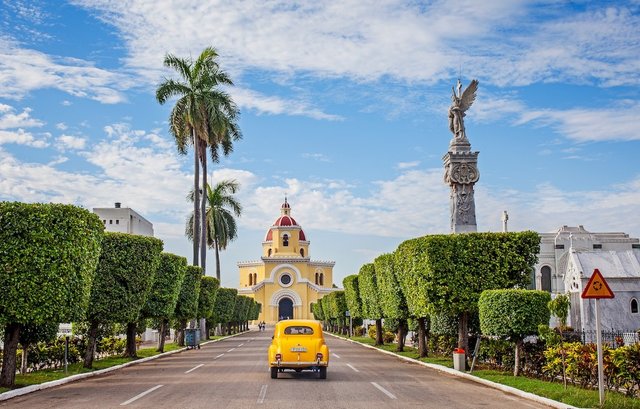
Cementerio de Colón, Havana
In Havana there are around 21 cemeteries, but that of Colón, located in the neighborhood of Vedado, is the largest of them where 8 of every 10 Habaneros who die are buried. After crossing the impressive entrance door of Byzantine style, the visitor enters a kind of small city with wide streets populated by 56,000 mausoleums. Through some of them, although also in the humblest tombs, you can get to know some of the stories that best define the inhabitants of Havana, such as Alberto Yarini, Eugenio Casimiro or Amelia Goyri.
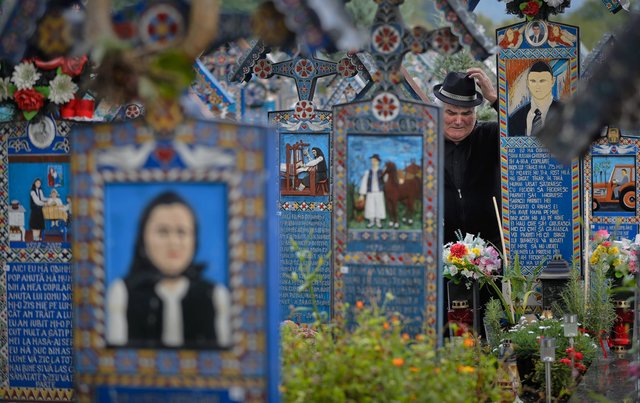
Happy Cemetery, Sapantza (Romania)
The colorful art of the Sapantza cemetery is surprising, and for this reason it has become one of the most peculiar in the world. On the tombstones of the deceased, in addition to the name and date of death, there is also an epitaph and a drawing that tells a characteristic fact of their lives, an idea that emerged from a local artisan after the Second World War and has already been Become a tradition.
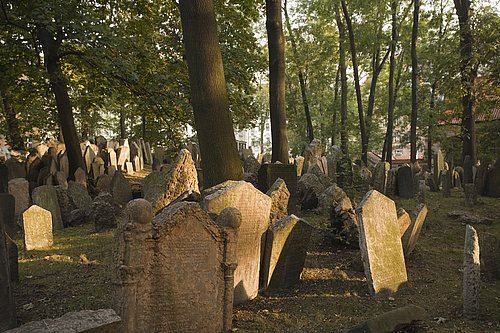
Jewish Cemetery of Prague
In the neighborhood of Josejov in the Czech capital lies this small cemetery of one hectare of surface in which there are buried some 100,000 Jews with a total of 12,000 tombstones. One of its particularities that stands out is the amount of tombstones accumulated, since due to the Jewish custom that does not allow to eliminate old tombs throughout the time the new deceaseds have been buried on of the previous ones.

Cemetery Azael Franco, Tulcan (Ecuador)
The white tombs of this Ecuadorian cemetery contrast with the deep green of the molded cypresses that surround them and protect them from the wind. The funerary tree par excellence, takes a new role in this cemetery by the hand of Azael Franco. Since 1936 have emerged from the scissors of this skillful gardener innumerable animal figures, Inca and Mayan gods and Egyptian, Greek and Roman figures who have given the cypresses, always associated with the pain of death, a renewed role of decoration.
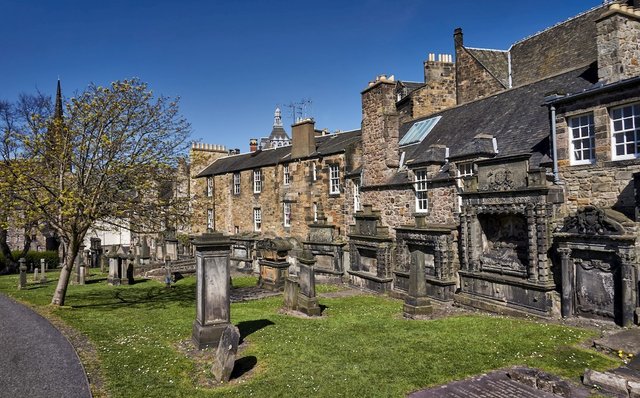
Greyfriars Cemetery, Edinburgh
Very often and due to the Scottish climate, gray clouds lurk in the Edinburgh sky. When this circumstance occurs, it seems even more appealing to get to know the cemetery of Greyfriars, in which guided views are organized and where almost every one of its graves hides a legend underground. One of his best-known symbols is a small, faithful dog, Bobby, who wept for the death of his owner for years. However, other less friendly presences such as Bloody Mackenzie (the bloodthirsty Mackenzie), known for his terrible reputation as a torturer whose tomb is known as the Black Mausoleum (Black Mausoleum), also fly over the cemetery.

Old Burying Point Cementery, Salem (USA)
The city of Salem is infamous for a tragic historical episode occurred in 1692 that stars in The Witch of Salem, by Arthur Miller. Two girls had suffered strange attacks of convulsions that were soon attributed to acts of witchcraft. With the help of local judge John Hawthorne who saw an opportunity to impose the ecclesiastical power, panic spread among the inhabitants and accusations between neighbors and friends ended with 141 people tried. The process resulted in 20 death sentences. In the cemetery of the population you can see the graves of some of their victims, such as Giles Corey or Mary Parker.
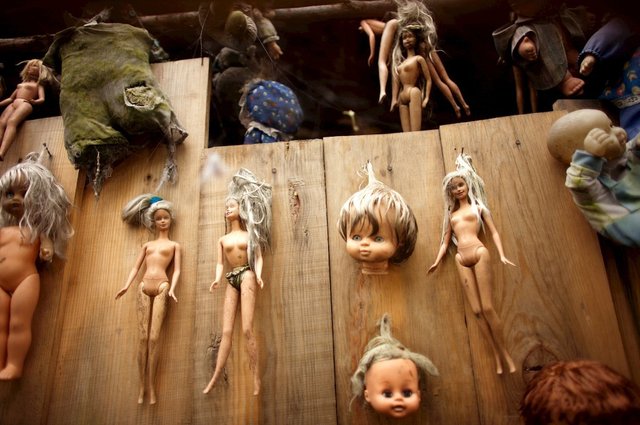
The island of the dolls, Xoxhimilco (Mexico)
A sinister vision of bald dolls, without arms, with empty eyes or naked and dirty receive the visitor in the island of the dolls, located between the channels of Xochimilco, Mexico. The origin of this peculiar cemetery is confusing: it is said that a young girl - or a girl - died drowned in the waters of the river and the owner of the land began to leave dolls to keep company with the soul of the deceased, although this fact never has been able to check. After a visit through the canals of Xoxhimilco to admire the traditional boats adorned with colorful flowers, the images of the island of the dolls will not leave anyone indifferent.

Sengaku-ji Cemetery, Tokyo
The legend of the 47 Ronin, one of the most famous myths of Japanese culture, fills Sengaku-ji's tokiota cemetery with an aura of mystery. The story goes that during the Edo period, a daimyo (feudal lord) assaulted a member of the government and was forced to commit seppuku (a ritual of suicide). The vassals decided to avenge the death of their master, and after carrying out the 47 ronin (samuráis without sir) also had to face the seppuku. Admired for his loyalty and courage, his story spread throughout the country, becoming a symbol of Japanese tradition.

Père-Lachaise, Paris
With a size much larger than that of Montmartre, the Père-Lachaise Cemetery owes its name to Father François d'Aix de La Chaise, confessor of Louis XIV of France. It has a lot of green spaces and houses a large number of tombs of French personalities such as Pierre Bourdieu, Guillaume Apollinaire, Honoré Balzac, Fédéric Chopin, Maria Callas, Delacroix, Jaques-Luis David, Gerda Taro, Proust and many others.
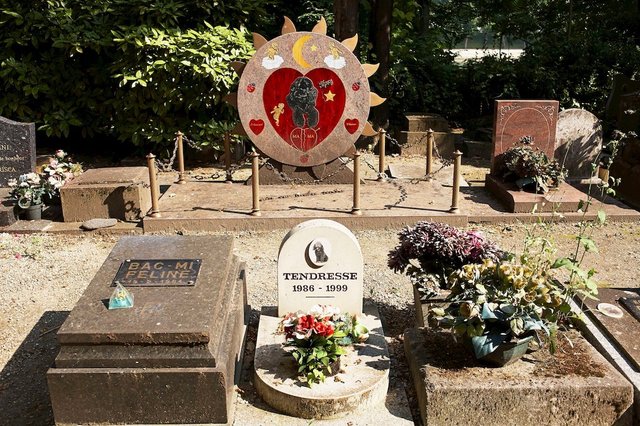
Dog cemetery, Asnières-sur-Seine (France)
When in 1899 the French authorities approved a new law according to which the bodies of deceased pets could not be buried anywhere or abandoned, the Cimetière des Chiens (Dog Cemetery) was created. This initiative led by the journalist Marguerite Durand was a success and currently has the tombs of 40,000 animals; dogs and cats, but also hens, monkeys, pigs, horses, etc. Some of the deceased pets, in addition to surely keeping a deep love story, are also famous, such as the dog Rin Tin Tin or the cat by Alexandre Dumas.

Friedhof Grunewald-Forst, Berlin
South of the city of Berlin and during the nineteenth century, people who wanted to kill themselves on many occasions decided to go to the river Havel. The problem was that many of the corpses were stranded in the meanders of the river and, because they could not be buried in a Christian cemetery for their sin, they became a problem for the authorities. They found the solution in the Grunewald forest, which would eventually become the cemetery for suicide bombers.
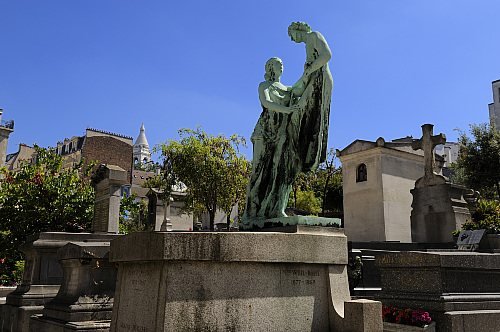
Montmartre Cemetery, Paris
Opened in 1825, the also known as the Cemetery of the North is the third largest in Paris. Its proximity to the church of Sacré Coeur (Sacred Heart) and the abundance of trees and vegetation that surrounds the niches make it an ideal place to walk. In addition, a visit to this cemetery offers the opportunity to pay a small tribute to some of the famous people who have buried him there. Gustave Moureau, Emile Zola, Edgar Degas, Alexandre Dumas or Dalida among many others.
WARNING! The comment below by @ilhamyus leads to a known phishing site that could steal your account.
Do not open links from users you do not trust. Do not provide your private keys to any third party websites.
Downvoting a post can decrease pending rewards and make it less visible. Common reasons:
Submit
🌎🛩
Downvoting a post can decrease pending rewards and make it less visible. Common reasons:
Submit
WARNING - The message you received from @ilhamyus is a CONFIRMED SCAM!
DO NOT FOLLOW any instruction and DO NOT CLICK on any link in the comment!
For more information, read this post:
https://steemit.com/steemit/@arcange/phishing-site-reported-tpm-rotator
If you find my work to protect you and the community valuable, please consider to upvote this warning or to vote for my witness.
Downvoting a post can decrease pending rewards and make it less visible. Common reasons:
Submit